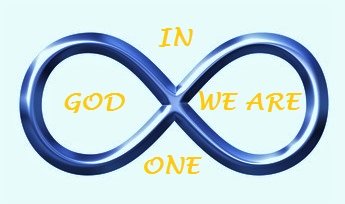Miraculous Occurrences:
Faith, Belief, and the Power Within
Throughout history, humanity has been captivated by miraculous occurrences—wounds that mimic the suffering of Christ, spontaneous healings, visions of celestial beings, and inexplicable recoveries. These events, often attributed to divine intervention, are embraced by the faithful as proof of a higher power’s hand in human affairs. But what if these miracles are not acts of an external deity but rather manifestations of the boundless potential within the human spirit?
The Mind-Body Connection and the Power of Belief
Modern science continues to unveil the profound relationship between mind and body, demonstrating that belief itself can shape reality in extraordinary ways. The placebo effect, for instance, is a well-documented phenomenon in which a person’s expectation of healing leads to real physiological improvements—sometimes even when the administered treatment is nothing more than a sugar pill. If belief alone can summon healing responses within the body, could it also be the catalyst behind miraculous occurrences?
Stigmata: A Reflection of Deep Faith
Stigmata, the appearance of wounds resembling those of the crucified Christ, have long been considered a divine mark upon select individuals. However, psychological studies suggest that these wounds may emerge not from supernatural forces, but from the depths of the subconscious mind responding to profound religious devotion. In a state of intense spiritual connection, the body might externalize deep-seated beliefs and emotional states, producing phenomena that defy conventional medical understanding. This is particularly significant because according to Joseph Atwill's exhaustive research, it's likely Jesus Christ is a fictional character.
Spontaneous Healings: The Power of Conviction
Stories of terminal illnesses vanishing overnight, of the blind seeing and the lame walking, fill the annals of religious and spiritual traditions. While skeptics dismiss such accounts as exaggerations or misdiagnoses, cases remain where no medical explanation suffices. Could it be that faith—whether in a divine presence, a spiritual leader, or in one’s own innate healing power—triggers a radical realignment within the body, activating hidden reserves of regenerative potential?
Miracles as the Echo of Collective Consciousness
In moments of mass spiritual ecstasy—pilgrimages, revivals, or sacred gatherings—large numbers of individuals have reported miraculous experiences. The energy of collective belief may function as a catalyst, reinforcing and amplifying the effects of faith within each participant. As waves of expectation and conviction build, they create an environment ripe for extraordinary occurrences, much like the contagious nature of emotions in a crowd.
The Divine Within: Reframing Miracles
Rather than seeing miracles as external gifts bestowed upon the chosen, what if we view them as glimpses into the latent power within all of us? If faith can heal, if belief can transform flesh, then perhaps the divine is not an outside force but the limitless creative essence embedded within every being. The One Holy Source flows through all, waiting to be recognized and wielded by those who dare to believe in their own boundless potential.
Miracles, then, are not proof of something outside of us but reflections of what we are capable of becoming. They are reminders that faith—whether in a deity, a principle, or the self—has the power to shift reality. If we open our hearts and minds to this truth, who knows what wonders we might bring forth?
Explore, Question, and Awaken
At One Holy Source, we invite you to explore these mysteries not as passive observers but as active participants in the miraculous. What do you believe? How does faith shape your reality? Engage with us in this ongoing journey of discovery and transformation, for the greatest miracle may be the awakening of our own divine nature.
Goal Actualization and Miracle Manifestation:
Two Sides of the Same Coin?
The line between what we call a miracle and what we consider a personal achievement may be thinner than we think. Both goal actualization and miracle manifestation appear to arise from similar internal mechanisms—belief, intention, and focused energy. Could it be that miracles are simply extraordinary goal manifestations, and goals, in turn, are everyday miracles we’ve come to accept as ordinary?
The Power of Belief: Fuel for Change
At the heart of both miracles and realized goals lies an undeniable force—belief. Whether it is an individual striving for a dream or a person experiencing a miraculous healing, the unwavering conviction that something is possible plays a crucial role. Scientific studies have shown the power of belief through phenomena such as the placebo effect, where patients heal because they expect to, and the psychology of self-efficacy, where confidence in one's ability increases the likelihood of success.
Focused Intention: Directing the Energy
Miracle stories and success narratives often have one thing in common: a deeply held, focused intention. Those who achieve great things, whether spiritually or practically, do not merely wish for them but dedicate energy and thought toward them. Manifestation teachings, from ancient spiritual traditions to modern self-help philosophies, emphasize the importance of clarity in intention. Whether one prays for a miracle or sets a goal for career advancement, the mental focus applied determines the likelihood of realization.
Aligning with the Field of Possibilities
Quantum physics suggests that all possibilities exist simultaneously until observed into reality. This aligns remarkably with spiritual teachings, which propose that our thoughts and beliefs influence the unfolding of our personal experiences. When someone believes in the likelihood of a miracle or the achievement of a major goal, they become attuned to opportunities, resources, and pathways they may have otherwise ignored. In this way, both miracles and actualized goals may stem from the same underlying mechanism—alignment with possibility.
The Role of Faith and Patience
Both miraculous transformations and ambitious personal achievements require an element of faith—faith in unseen forces, in one’s ability, or in the unfolding of circumstances. Patience and persistence are key components, whether one is awaiting divine intervention or putting in daily effort toward a vision. Those who experience miraculous changes and those who reach high goals often recount similar struggles, moments of doubt, and eventual triumph.
Reframing Miracles and Goals
What if we began to see all realized goals as small miracles and miracles as grand manifestations of focused intention? This shift in perspective invites us to actively participate in what we typically deem supernatural. It suggests that, rather than passively waiting for miracles, we have the power to generate them through belief, action, and alignment.
Bridging the Mystical and the Practical
At their core, both miracle manifestations and goal actualizations may not be as different as we assume. If belief, intention, and alignment with possibilities are essential for both, then we are constantly performing small miracles in our lives—whether we recognize them as such or not. By understanding this connection, we can harness our inner power to shape our realities in extraordinary ways.
Whether you call it divine intervention or disciplined manifestation, one thing remains clear: the extraordinary is well within our reach. The question is not whether miracles happen, but whether we are willing to participate in their creation.

